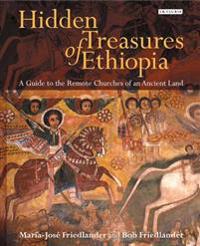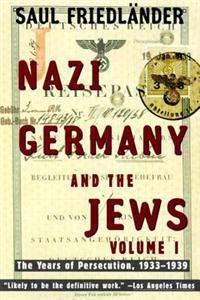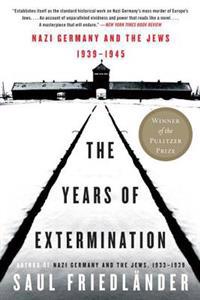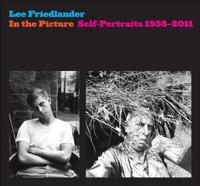Lee Friedlander (Inbunden)
avLee Friedlander, James Enyeart, Lee Friedlander
ISBN: 9781891024979 - UTGIVEN: 2004-10Photographer Friedlander offers his view of America as seen through its architecture. Shot during the course of countless trips to urban and rural areas across the country, many of them made by car, these pictures capture an America as unblemished by romanticized notions of human nature as it is ful[...]
Hidden Treasures of Ethiopia (Inbunden)
avBob Friedlander, Marie-jose Friedlander, Bob Friedlander
ISBN: 9781780768168 - UTGIVEN: 2015-05Ethiopia is a land of hidden treasures, and among the greatest are its remote churches, whose richly decorated interiors amaze and astound with their vibrant colours and extraordinary illustration. Yet steeped in ancient legend, and often situated in remote locations, a true appreciation and underst[...]
Dressing Up (Inbunden)
avLee Friedlander, Kathy Ryan, Lee Friedlander
ISBN: 9780300179859 - UTGIVEN: 2015-02Lee Friedlander (b. 1934) is one of the most renowned photographers of his generation. Through Friedlander's lens, people in their everyday environments are transformed into arresting portraits, and the banal features of roadsides, storefronts, and city streets become vivid scenery. In Dressing Up, [...]
Opera De Cribro (Inbunden)
avJohn Friedlander, Henryk Iwaniec, John Friedlander
ISBN: 9780821849705 - UTGIVEN: 2010-05This is a truly comprehensive account of sieves and their applications, by two of the world's greatest authorities. Beginners will find a thorough introduction to the subject, with plenty of helpful motivation. The more practised reader will appreciate the authors' insights into some of the more mys[...]
The Years of Extermination (Inbunden)
avSaul Friedlander
ISBN: 9780060190439 - UTGIVEN: 2007-04An authoritative account of the Holocaust goes beyond usual historical studies to include coverage of the reactions of period world authorities, religious groups, and social groups, in a volume that draws on more than thirty years of research. By the author of Nazi Germany and the Jews.[...]
Nazi Germany and the Jews: Volume 1: The Years of Persecution 1933-1939 (Häftad)
avSaul Friedlander
ISBN: 9780060928780 - UTGIVEN: 199803A great historian crowns a lifetime of thought and research by answering a question that has haunted us for more than 50 years: How did one of the most industrially and culturally advanced nations in the world embark on and continue along the path leading to one of the most enormous criminal enterpr[...]
The Years of Extermination: Nazi Germany and the Jews, 1939-1945 (Häftad)
avSaul Friedlander
ISBN: 9780060930486 - UTGIVEN: 200804An authoritative account of the Holocaust goes beyond usual historical studies to include coverage of the reactions of period world authorities, religious groups, and social groups, in a volume that draws on more than thirty years of research. By the author of Nazi Germany and the Jews. Reprint.[...]
Nazi Germany and the Jews, 1933-1945 (Häftad)
avSaul Friedlander, Orna Kenan
ISBN: 9780061350276 - UTGIVEN: 200903Nazi Germany and the Jews, 1933-1945 is an abridged edition of Saul Friedlander's definitive Pulitzer Prize-winning two-volume history of the Holocaust: Nazi Germany and the Jews: The Years of Persecution, 1933-1939 and The Years of Extermination: Nazi Germany and the Jews, 1939-1945.The book's firs[...]
How to Beat Up Anybody (Häftad)
avJudah Friedlander
ISBN: 9780061969775 - UTGIVEN: 201010Judah Friedlander is the world champion, the greatest athlete in the world, a master of the martial arts, the only extra-dark blackbelt to ever exist. He's banned from China because he's too good at karate; that's why they built The Great Wall - to keep him out. He hooks up with 40 chicks a day and [...]
Classical and Modern Direction-of-Arrival Estimation (Inbunden)
avT. Engin Tuncer, Benjamin Friedlander, T. Engin Tuncer
ISBN: 9780123745248 - UTGIVEN: 200907This title brings together in one book classical and modern DOA techniques, showing the connections between them. It contains contributions from the leading people in the field. It gives a concise and easy-to-read introduction to the classical techniques. It evaluates the strengths and weaknesses of[...]
Franz Kafka (Inbunden)
avSaul Friedlander
ISBN: 9780300136616 - UTGIVEN: 201305Franz Kafka was the poet of his own disorder. Throughout his life he struggled with a pervasive sense of shame and guilt that left traces in his daily existence - in his many letters, extensive diaries, and especially in his fiction. This stimulating book investigates some of the sources of Kafka's [...]
In the Picture (Häftad)
avLee Friedlander
ISBN: 9780300177299 - UTGIVEN: 201111Lee Friedlander (b. 1934) has been tackling the challenge of self-portraiture throughout his prolific career. What began as an unorthodox investigation of the genre has become a masterful engagement spanning five decades. In this extraordinary compilation, which includes hundreds of previously unpub[...]
JFK (Inbunden)
avLee Friedlander
ISBN: 9780300191080 - UTGIVEN: 2013-09The public outpouring of support for newly elected President John F. Kennedy in 1960 was exceeded in scope and magnitude by the manifestations of grief and mourning after his assassination in 1963. These responses had an unusually strong visual component: likenesses of the president were framed in s[...]
Playing for the Benefit of the Band (Inbunden)
avLee Friedlander
ISBN: 9780300204407 - UTGIVEN: 2014-03Lee Friedlander first visited the birthplace of jazz in 1957 and immediately set about photographing the aging pioneers of the art form. His love of the music and the people of New Orleans drew him back to the city, and the relationships he formed over time gave him intimate access to a scene that f[...]
Family in the Picture, 1958-2013 (Inbunden)
avLee (PHT) Friedlander
ISBN: 9780300204834 - UTGIVEN: 2014-03This book is designed and conceived to complement. In the Picture, his 2011 volume of self-portraits, Lee Friedlander's Family in the Picture is the family album of one of the most restless and inventive figures in the history of photography. The sequence of over 350 pictures begins with images of F[...]
Jewish Fairy Tales (Inbunden)
avFRIEDLANDER
ISBN: 9780486419824 - UTGIVEN: 200303Nine tales from antiquity will enthrall children with the exploits of kings and beggars in a spellbinding world of demons, angels and other supernatural creatures. Drawn from authentic sources, the captivating stories are enlivened by numerous imaginative illustrations.[...]
Introduction to the Theory of Distributions (Häftad)
avF.G. Friedlander, Mark Joshi
ISBN: 9780521649711 - UTGIVEN: 1999-01The theory of distributions is an extension of classical analysis which has acquired a particular importance in the field of linear partial differential equations, as well as having many other applications, for example in harmonic analysis. Underlying it is the theory of topological vector spaces, b[...]
Walter Benjamin (Inbunden)
avEli Friedlander
ISBN: 9780674061699 - UTGIVEN: 201201Walter Benjamin is often viewed as a cultural critic who produced a vast array of brilliant and idiosyncratic pieces of writing with little more to unify them than the feeling that they all bear the stamp of his "unclassifiable" genius. Eli Friedlander argues that Walter Benjamin's corpus of writing[...]
Probing the Limits of Representation (Pocket)
avSaul (EDT) Friedlander
ISBN: 9780674707665 - UTGIVEN: 1992-05Can the Holocaust be compellingly described or represented? Or is there some core aspect of the extermination of the Jews of Europe which resists our powers of depiction, of theory, of narrative? In this volume, 20 scholars probe the moral, epistemological and aesthetic limits of an account or portr[...]
Cycles, Transfers, and Motivic Homology Theories (Pocket)
avVladimir Voevodsky, Andrei Suslin, Eric M. Friedlander
ISBN: 9780691048154 - UTGIVEN: 2000-04-04Nazi Germany and the Jews: The Years of Extermination (Häftad)
avSaul Friedlander
ISBN: 9780753824450 - UTGIVEN: 2008-10With THE YEARS OF EXTERMINATION, Friedlander completes his work on Nazi Germany and the Jews. The book describes and interprets the history of the persecution and murder of the Jews throughout occupied Europe. The implementation of German extermination policies and measures depended on the submissi[...]
Nazi Germany and the Jews (Storpocket)
avSaul Friedlander
ISBN: 9780753827567 - UTGIVEN: 2009-11Saul Friedlander's historical masterpiece is perhaps the richest examination of the Holocaust yet written, and, crucially, one that never loses sight of the experiences of individuals in its discussion of Nazi politics and the terrible statistics and technological and administrative sophistication o[...]
The Origins of Nazi Genocide (Häftad)
avHenry Friedlander
ISBN: 9780807846759 - UTGIVEN: 199709Tracing the rise of racist and eugenic ideologies, Henry Friedlander explores how the Nazi programme of secretly exterminating the handicapped and disabled evolved into the systematic destruction of Jews and Gypsies. He describes how the so-called euthanasia of the handicapped provided a practical m[...]



























